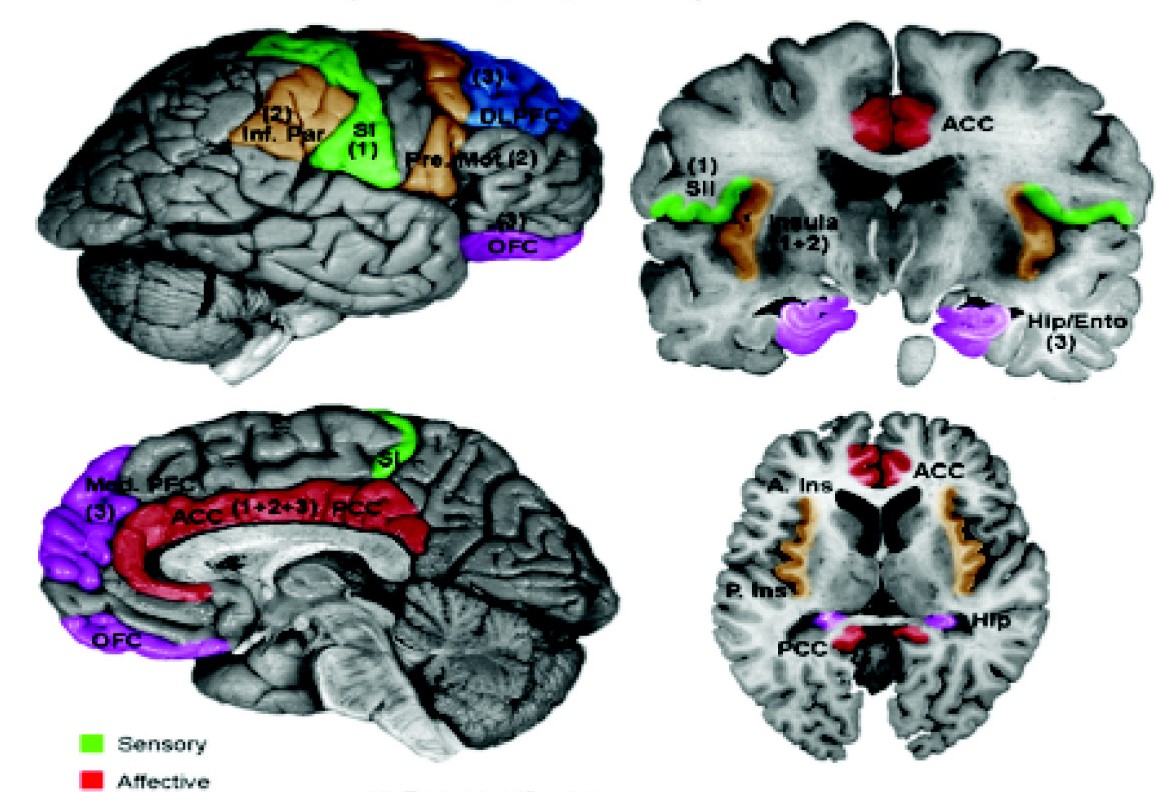Secondary Somatosensory Cortex on:
[Wikipedia]
[Google]
[Amazon]
 The human secondary somatosensory cortex (S2, SII) is a region of cortex in the parietal operculum on the ceiling of the lateral sulcus.
Region S2 was first described by Adrian in 1940, who found that feeling in cats' feet was not only represented in the
The human secondary somatosensory cortex (S2, SII) is a region of cortex in the parietal operculum on the ceiling of the lateral sulcus.
Region S2 was first described by Adrian in 1940, who found that feeling in cats' feet was not only represented in the
 The human secondary somatosensory cortex (S2, SII) is a region of cortex in the parietal operculum on the ceiling of the lateral sulcus.
Region S2 was first described by Adrian in 1940, who found that feeling in cats' feet was not only represented in the
The human secondary somatosensory cortex (S2, SII) is a region of cortex in the parietal operculum on the ceiling of the lateral sulcus.
Region S2 was first described by Adrian in 1940, who found that feeling in cats' feet was not only represented in the primary somatosensory cortex
In neuroanatomy, the primary somatosensory cortex is located in the postcentral gyrus of the brain's parietal lobe, and is part of the somatosensory system. It was initially defined from surface stimulation studies of Wilder Penfield, and pa ...
(S1) but also in a second region adjacent to S1. In 1954, Penfield and Jasper evoked somatosensory sensations in human patients during neurosurgery by electrically stimulating the ceiling of the lateral sulcus, which lies adjacent to S1, and their findings were confirmed in 1979 by Woolsey et al. using evoked potential
An evoked potential or evoked response is an electrical potential in a specific pattern recorded from a specific part of the nervous system, especially the brain, of a human or other animals following presentation of a stimulus such as a light f ...
s and electrical stimulation. Experiments involving ablation of the second somatosensory cortex in primates indicate that this cortical area is involved in remembering the differences between tactile shapes and textures. Functional neuroimaging studies have found S2 activation in response to light touch, pain, visceral sensation, and tactile attention.
In monkeys, apes and hominids, including humans, region S2 is divided into several "areas". An area at the entrance to the lateral sulcus, adjoining the primary somatosensory cortex (S1), is called the parietal ventral (PV) area. Posterior to PV is the secondary somatosensory ''area'' (area S2, which must not be confused with "''region'' S2" which designates the entire secondary somatosensory cortex, of which ''area'' S2 is a part). Deeper in the lateral sulcus lies the ventral somatosensory (VS) area, whose outer edge adjoins areas PV and S2 and inner edge adjoins the insular cortex
The insular cortex (also insula and insular lobe) is a portion of the cerebral cortex folded deep within the lateral sulcus (the fissure separating the temporal lobe from the parietal and frontal lobes) within each hemisphere of the mammalian b ...
.
In humans, the secondary somatosensory cortex includes parts of Brodmann area (BA) 40 and 43.
Areas PV and S2 both map the body surface. Functional neuroimaging in humans has revealed that in areas PV and S2 the face is represented near the entrance to the lateral sulcus, and the hands and feet deeper in the fissure. Individual neurons in areas PV and S2 receive input from wide areas of the body surface (they have large "receptive field
The receptive field, or sensory space, is a delimited medium where some physiological stimuli can evoke a sensory neuronal response in specific organisms.
Complexity of the receptive field ranges from the unidimensional chemical structure of o ...
s"), and respond readily to stimuli such as wiping a sponge over a large area of skin.
Area PV connects densely with BA 5 and the premotor cortex
The premotor cortex is an area of the motor cortex lying within the frontal lobe of the brain just anterior to the primary motor cortex. It occupies part of Brodmann's area 6. It has been studied mainly in primates, including monkeys and humans ...
. Area S2 is interconnected with BA 1 and densely so with BA 3b, and projects to PV, BA 7b, insular cortex, amygdala
The amygdala (; plural: amygdalae or amygdalas; also '; Latin from Greek, , ', 'almond', 'tonsil') is one of two almond-shaped clusters of nuclei located deep and medially within the temporal lobes of the brain's cerebrum in complex ver ...
and hippocampus
The hippocampus (via Latin from Greek , 'seahorse') is a major component of the brain of humans and other vertebrates. Humans and other mammals have two hippocampi, one in each side of the brain. The hippocampus is part of the limbic syste ...
. Areas S2 in the left and right hemispheres are densely interconnected, and stimulation on one side of the body will activate area S2 in both hemispheres.
See also
* Brodmann area 5 * Brodmann area 7References
{{Reflist Cerebral cortex